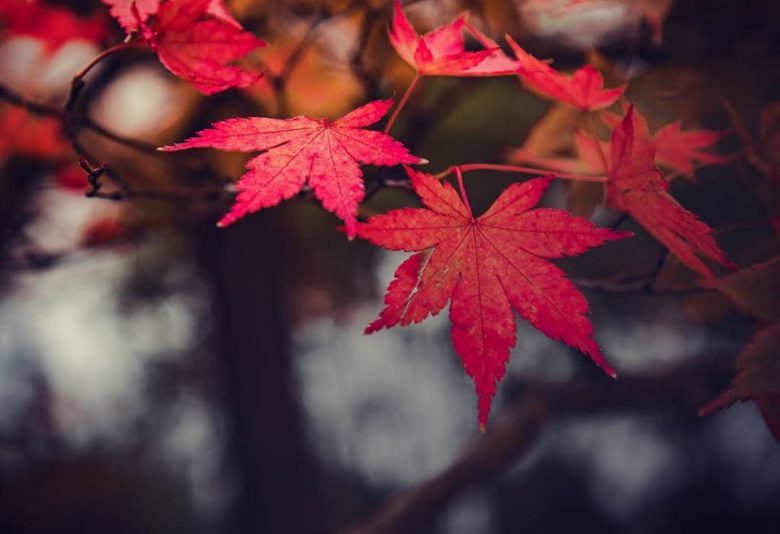
秋冬の先行予約
日本は春の名所として有名ですが、秋や冬にも訪れる理由はたくさんあります。
内容
先行予約とは何ですか?
入居されている方より退室の1か月前までに退去の通知をいただくため、ほとんどのお部屋は入居する約1か月前に空室情報を確認できます。お客様の御入居の約1カ月前に、サクラハウスのスタッフが、ぴったりのお部屋を見つけるお手伝いをいたします。
先行予約を利用することで、サクラハウスの優先リストに登録され、入居日の空室が確認され次第、ご連絡いたします。予算や場所などの好みだけでなく、シェアハウス、ゲストハウス、アパートなどの優先順位を付けることも可能です。
特定の部屋を保証することはできませんが、先行予約で滞在場所を保証します。完全にリスクフリーです。部屋を選択する前に予約をキャンセルする場合、デポジットは全額返金されます。
シェアハウス、ゲストハウス、アパートの1人は2万円、シェアハウスの部屋やアパートに1人追加するごとに1万円のデポジットが必要です。
敷金・保証金・仲介手数料などの初期費用はかかりません。日本では一般的には、入居費用として30万円から50万円以上の前払いが必要です。
東京と京都の秋と冬の気候
東京や京都の夏は蒸し暑いですが、秋の9月から少し涼しくなります。それでも10月はまだ泳ぐのに十分暖かいです!
冬は通常あまり寒くなく、11月から2月は東京からの富士山を見るのに最適な時期です。


河津の気候は、11月はまだ11〜18度の暖かく、1月から2月は4〜11度より低くなることはありません。
秋と冬のシーズンはどうしたらいいですか?
それで、秋と春のシーズンにユニークなことは何ですか?探してみましょう!
紅葉と花
日本は春の桜の季節で有名ですが、秋の紅葉も印象的です。葉の色の変化、黄色や深紅などを眺めることは、日本人には一般的です。
紅葉の他に、秋と冬に咲く有名な花がいくつかあります。
お祭り
日本のお祭りは一年中開催されており、秋、特に10月頃もたくさん開催されます。しかし、例えば有名な冬などにもそれらを見つけることができます雪まつり毎年1月と2月開催される北海道の「さっぽろ雪まつり」。
デザインフェスタ
アート愛好家のために、通常年に2回開催される特別なイベントがあります。デザインフェスタです。アジアで唯一最大のアートフェスティバル、パフォーマンス、国際料理、芸術的表現、豊かさ、多様性、そしてデザインフェスタでの情熱の組み合わせは、他に類を見ないものです。
デザインフェスタは、年齢、国籍、才能、言語を問わず、誰でも参加できる芸術の祭典です。デザインフェスタは、1994年の創業以来、年に2回、12,000人を超えるアーティストのプラットフォームとして機能しており、プロとアマチュアの両方を歓迎しています。アーティストとのやり取り、ライブミュージックとダンスに興味がある場合でも、人生を輝かせる特別なものを探している場合でも、デザインフェスタで見つけることができます。
次はデザインフェスタvol.52は、2020年11月7日から11月8日まで、東京ビッグサイトの西ホールで開催されます。
冬のイルミネーション
クリスマスとお正月に冬のイルミネーションは全国の都市で人気のアトラクションです。ほとんどが11月から12月の間に始まり、見逃せない魔法の体験です。
ハロウィーンと大晦日のカウントダウン
ハロウィンは日本でとても人気があることをご存知ですか?有名な渋谷スクランブルスクエアでコスプレとハロウィンパーティーをしませんか。
また、大晦日のカウントダウンで有名なスポットでもあります。

初詣–新年初の神社参拝
初詣は、正月初の神社参拝のお祝いです。また、幸運のお守りを迎える絶好の機会でもあります!総本寺は、サクラハウス西新井大師から徒歩わずか数分です。
ウィンタースポーツ
スキーは、日本で最も人気のあるウィンタースポーツの1つであり、京都と東京の周辺で日帰り旅行を楽しめる素晴らしい選択肢がたくさんあります。
スキーやスノーボードのギアを持っていない場合は、スキー場で簡単にレンタルできます。
東京の近くには、長野、福島、または新潟にたくさんの選択肢があります。最も有名なものは次のとおりです。
- 白馬スキー場(長野)–東京から約3.5時間
- 野沢温泉(中野)–東京から約2.5〜3時間
- 妙高高原(新潟)–東京から約3〜4時間
京都の近くには、特に琵琶湖周辺にたくさんの選択肢があります。
- 琵琶湖スキーリゾート–京都から約1時間
- 朽木スノーパーク–京都から約1時間
- 函館山スキー場–京都から約1.5時間
東京や京都に近くはありませんが、北海道のニセコは日本で最も有名なスキーリゾートの1つでもあります。札幌への直行便があります。新千歳空港。

温泉
特に寒い日や忙しい一日のスキーの後には、日本の温泉でひと休みするのが気持ちいいです。
水源によって温泉の種類が異なります。またさまざまなミネラルと特性がそれぞれ異なります。温泉の平均気温は摂氏38度から43度です。

東京、京都、または伊豆河津-全部行きますか?
サクラハウスは東京、京都などに宿泊施設を提供しています伊豆半島では、複数の都市で宿泊先を探すお手伝いをさせていただきます。ある場所から別の場所に移動するための最適な方法は何でしょうか?お見逃しなく!

東京⇔京都
東京と京都は約450 km(車で5〜7時間)の距離にありますが、車を運転せずに駐車スペースを探す必要がない場合は、いくつかの選択肢があります。

Seishun 18 pass
Seishun 18 passは、北の北海道から南の九州まで、全国各地のJRの快速列車に乗り放題ですが、新幹線や特急にはご利用いただけません。 1日2,410円で5日間の旅が含まれます。 1人で5日間、または5人まで分割できます。
東京⇔伊豆河津
東京から電車で河津に簡単にアクセスできます。所要時間は2時間半〜3時間半で、片道3,700円前後。
京都⇔伊豆河津
京都から河津に到達する最良の方法は、新幹線のヒカリまたはコダマに乗って熱海に行き、そこから直接河津駅に向かいます。所要時間は3,5〜4時間、片道14,000円前後。
ジャパンレールパス
ジャパン・レール・パスは、海外から日本に滞在する外国人観光客が、「一時滞在者」の入国ステータスで、海外に住む日本人の特別な条件のみ購入できます。

参照元:https://japanrailpass.net/en/about_jrp.html
到着前にジャパン・レール・パスの購入を逃した場合でも、日本で購入できるようになりました。

参照元:https://japanrailpass.net/en/about_jrp.html
あなたの秋冬の先行予約ために!サクラハウスはあなたが滞在するのに適切な場所を見つけるサポートを致します!
サクラハウス
東京都新宿区西新宿7-2-6
西新宿K-1ビル2F
〒:160-0023
マップ
- 日本から:
- 03-5330-5250
- 日本国外から
- +81-3-5330-5250
- メール:
- [email protected]
- 営業時間:
- 午前8時50分から午後8時
年中無休です。
- 東京時間:
- 14:00(We are open now!)







